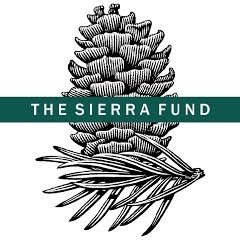Partner Profile | The Sierra Fund


As a partner to Blue Forest, The Sierra Fund is currently exploring the possibility of a Forest Resilience Bond centered around hydraulic mine remediation for the many abandoned California Gold rush-era mines across the Sierra Nevada region.
Wtitten by: Jessica Alvarez, Communications & Content Manager
The Sierra Fund (TSF) is a non profit organization committed to the land and people of California’s Sierra Nevada headwaters. TSF relies on the principles of science, stewardship, environmental justice, and policy advocacy to operationalize its mission to restore ecosystem resiliency and build community capacity in recovering from the legacy impacts of the gold mining era.
Its work centers around three core programs:
-
Restoring Ecosystem Resiliency
-
Empowering Environmentally Healthy Communities
-
Building Capacity in the Sierra Nevada
As a partner to Blue Forest, The Sierra Fund is currently exploring the possibility of a Forest Resilience Bond centered around hydraulic mine remediation for the many abandoned California Gold rush-era mines across the Sierra Nevada region.
“In the Yuba and Bear River watersheds, more hydraulic mining took place than anywhere else in the world,” explained TSF Program Director, Carrie Monohan, Ph.D.. “More than two to three times the amount of material excavated during the Panama Canal was washed down the Yuba and Bear rivers —we’re talking about 1.2 billion cubic yards of sediment.”
With the advent of LiDAR, she explained, it is now possible to actually delineate where these hydraulic mine sites are.The amount of sediment still coming off these sites, as well as their highly erosive state and the common presence of residual mercury from the mining process, is what makes them a good candidate for a Resilience Bond.
Monohan and Blue Forest co-founder, Nick Wobbrock, met via the Water Solutions Networks where Willie Whittlesey, Yuba Water Agency General Manager was also part of the network. Whittlesey was a forester in the region for many years before joining Yuba Water, and through his work became aware of and familiar with these legacy mines and the risk they posed in their degraded condition.
Working with Whittlesey, Monohan started to understand how much money the Yuba Water Agency was spending each year removing sediment that accumulated behind their facilities, namely their supply water diversion infrastructure.
Once they started to articulate the actual costs, they realized there was a need to clean up the source of this problem once and for all. Excitingly, this mine remediation work aligns with the forest health work and vision within the North Yuba Forest Partnership.
“We have mapped out the number of hydraulic mines in the Tahoe National Forest and we can estimate how much they are eroding and causing adverse impacts. The fuel treatment areas that are targeted in the larger forest health plan right now include those hydraulic mines,” said Monohan. “We won’t go out there and just do fuels reduction and ignore the eroding landscapes at hydraulic mine sites, so what the mine remediation really means here is fuels reduction followed by soil amendments with wood chips and biochar; it means restoring the soil integrity, so that it can support a healthy forest and it also means addressing the unique features that are part of the hydraulic mine sites that might need engineering solutions.”
TSF is currently working with Blue Forest and the Forest Service on ways to include this hydraulic mine remediation work as part of the larger forest health project of the North Yuba watershed.